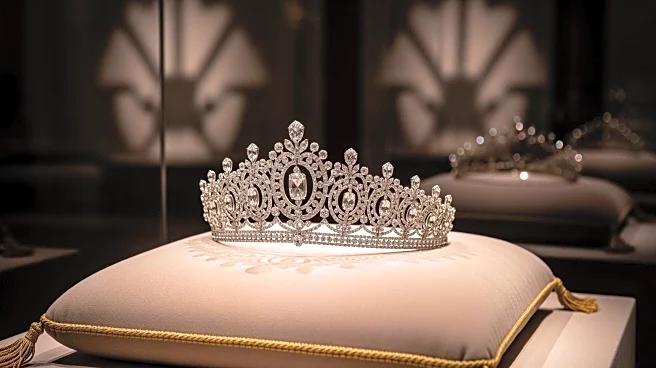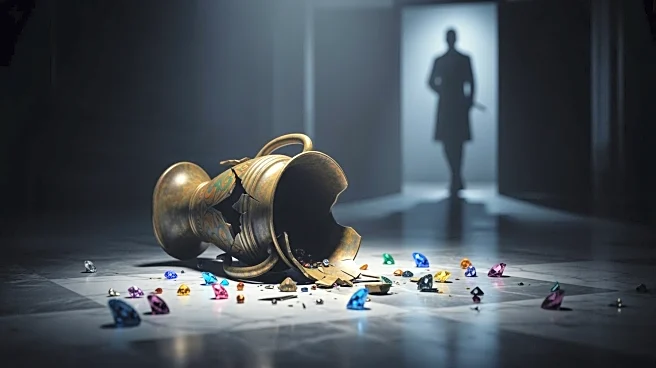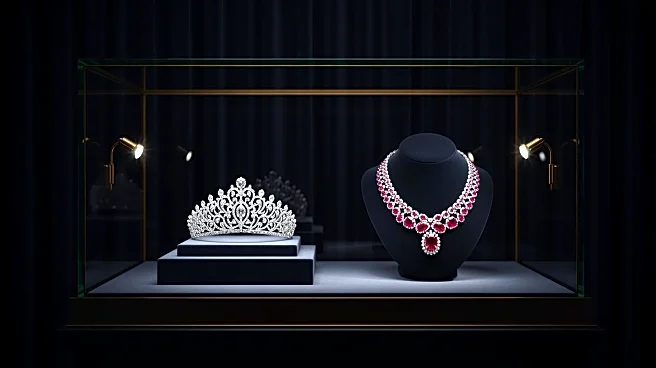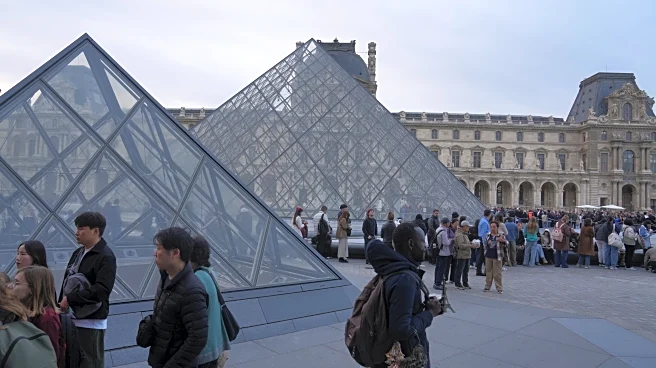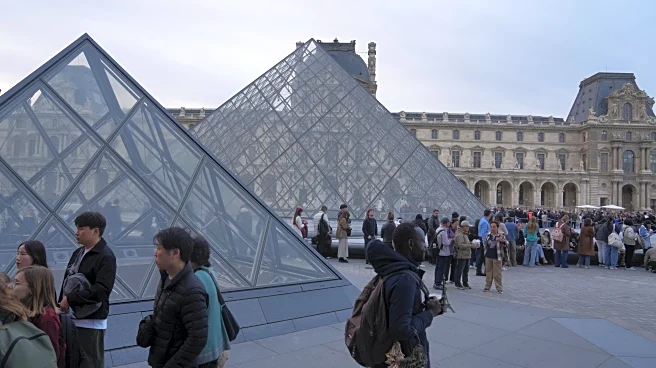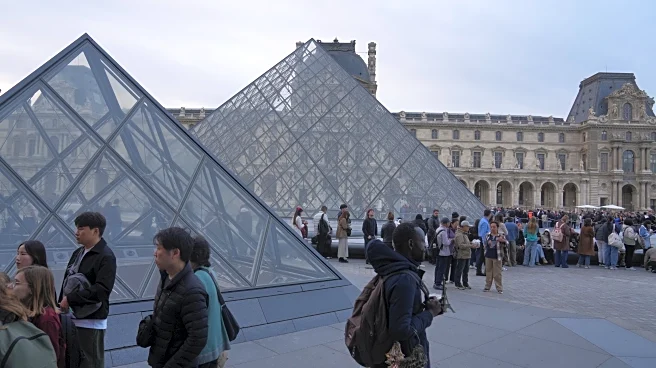What's Happening?
On October 19, a daring theft occurred at the Louvre in Paris, where thieves stole jewels worth approximately €88 million. The stolen items include historically significant pieces such as Empress Eugénie's
pearl tiara and Marie-Louise's sapphire diadem. French authorities have mobilized around 100 officers from the Brigade de Répression du Banditisme and the OCBC, the investigative service of the Direction Centrale de la Police Judiciaire, to focus on the case. Additionally, CGI, an Israeli private investigative firm known for solving the Green Vault theft in Dresden, Germany, in 2019, has been hired to assist in the investigation. Experts suggest that the stolen jewels, due to their historical significance and craftsmanship, may be difficult to sell or break up for profit.
Why It's Important?
The theft of such high-profile jewels from the Louvre has significant implications for the art world and security protocols at major cultural institutions. The stolen items are not only valuable but also carry historical importance, making their loss a cultural blow. The incident highlights vulnerabilities in museum security and may prompt institutions worldwide to reassess their protective measures. The involvement of international investigative firms underscores the global nature of art crime and the need for cross-border cooperation in solving such cases. The heist also raises concerns about the black market for stolen art and the challenges in recovering such items.
What's Next?
French authorities are expected to continue their investigation with the help of international experts. The possibility of offering a reward for information leading to the recovery of the jewels is being considered, as suggested by security experts. The case may take years to resolve, as seen in previous art thefts, but there remains hope for the eventual recovery of the stolen items. The investigation may lead to increased security measures at museums and cultural institutions worldwide, aiming to prevent similar incidents in the future.
Beyond the Headlines
The theft raises ethical questions about the motivations behind art crime and the role of collectors who may commission such heists. The targeted nature of the theft suggests a 'shopping list' approach, where specific items were sought, possibly for a private collector. This aspect of art crime highlights the darker side of art collecting and the lengths to which individuals may go to acquire coveted pieces. The incident may also influence public perception of museum security and the value placed on cultural heritage.


